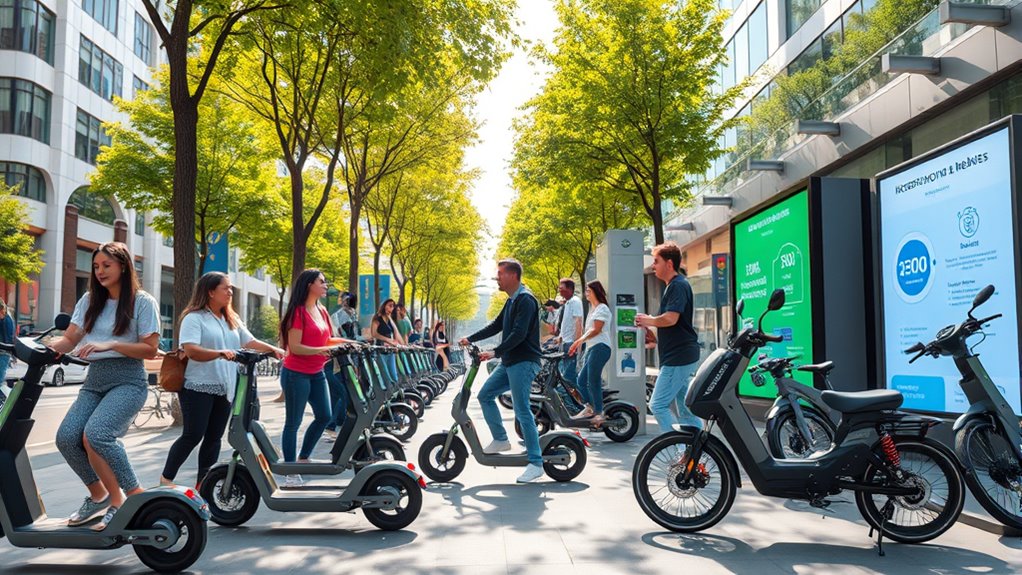Looking for ways to save on eco-friendly transportation? Micro-mobility incentives and rebates are offered by governments and organizations to lower costs for e-bikes, electric scooters, and bike shares. You can qualify through specific purchase or usage criteria, often with online applications or documentation. Regional and local programs may add extra benefits, like discounts or infrastructure improvements. Keep up with current opportunities and tips to maximize your savings—there’s much more to explore beyond this overview.
Key Takeaways
- Understand various local, state, and federal incentives available for electric bikes and scooters, including rebates and tax credits.
- Learn eligibility criteria and application procedures for maximizing your chances of qualifying for incentives.
- Explore regional programs that offer additional benefits like infrastructure funding, discounts, and memberships.
- Maintain proper documentation and stay updated on seasonal or referral discounts to enhance savings.
- Follow safety guidelines and keep records to benefit from incentives and simplify tax claims effectively.
Overview of Micro-Mobility Incentives and Rebates
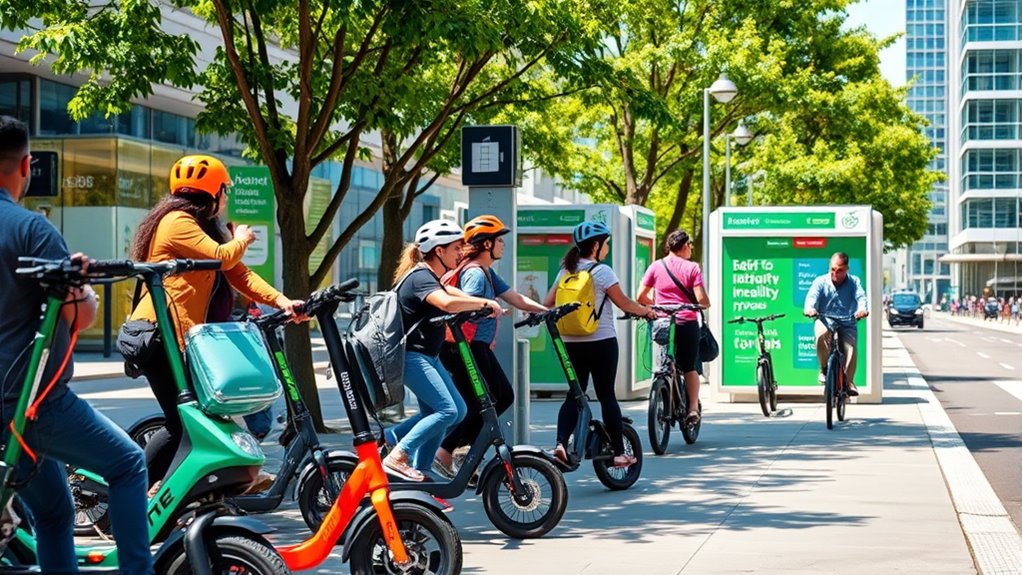
Have you ever wondered how governments and organizations encourage the use of small, eco-friendly transportation options? They often offer micro-mobility incentives and rebates to promote sustainable travel. These programs typically include discounts or financial rewards for using electric scooters and participating in bike sharing schemes. Incentives aim to reduce traffic congestion, lower emissions, and make urban commuting more accessible. Many cities partner with service providers to offer subsidies or reduced ride fees, encouraging more residents to choose eco-friendly options over cars. By providing these rebates, authorities hope to increase adoption of micro-mobility solutions, making it easier and more affordable for you to get around while supporting environmental goals. These initiatives are key to creating greener, more efficient urban transportation networks. Additionally, understanding home improvement strategies can help optimize the space and organization of these mobility options in your living environment.
Types of Programs Available for Riders and Purchasers
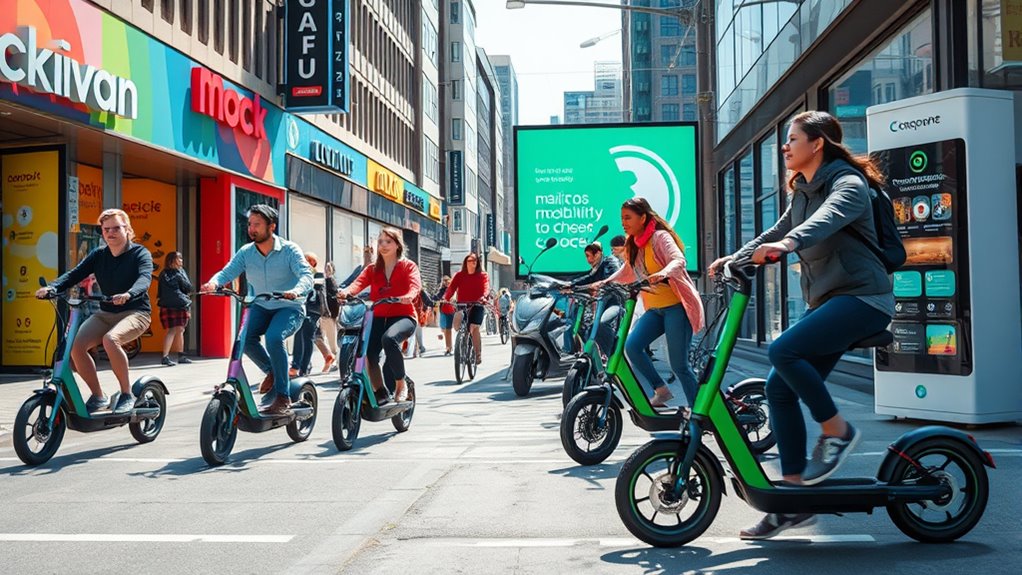
There are a variety of programs designed to benefit both micro-mobility riders and those purchasing electric bikes or scooters. E bike tax credits are available in some regions, offering riders a financial incentive when buying an eco-friendly e bike. Additionally, scooter rebate programs encourage the adoption of electric scooters by providing cash back or discounts at purchase. These programs aim to reduce costs and promote cleaner transportation options. Some local governments partner with manufacturers to offer specific rebates, while others provide tax credits directly on your tax return. By taking advantage of these programs, you can lower your overall expenses and contribute to a greener environment. Staying informed about current offerings guarantees you maximize your savings when investing in micro-mobility solutions. Understanding the high quality of projectors used in home cinemas can further enhance your viewing experience.
How to Qualify and Apply for Incentives
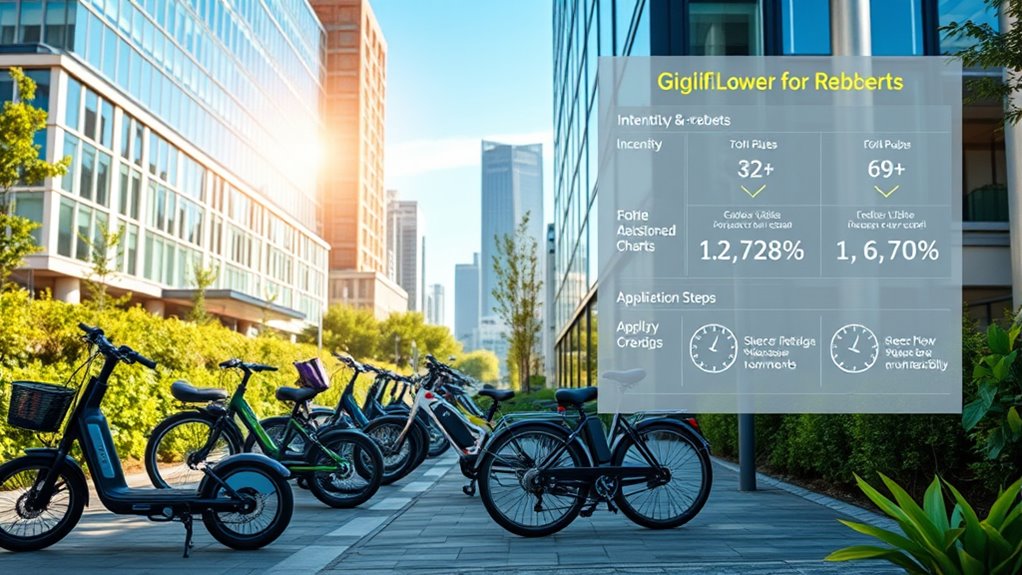
To qualify for micro-mobility incentives, you need to meet specific eligibility criteria set by local, state, or federal programs. Start by checking if your vehicle or purchase complies with program requirements, including any insurance requirements, such as liability coverage or proof of insurance. You’ll also need to demonstrate that your vehicle is properly maintained, which may involve providing maintenance records or inspections. Some programs may require proof of purchase or registration, while others might ask for income verification or residency documentation. Once you confirm your eligibility, gather all necessary documents and complete the application process online or in person. Carefully review each incentive’s guidelines to ensure you meet all criteria before submitting your application to maximize your chances of approval.
Regional and Local Incentive Opportunities
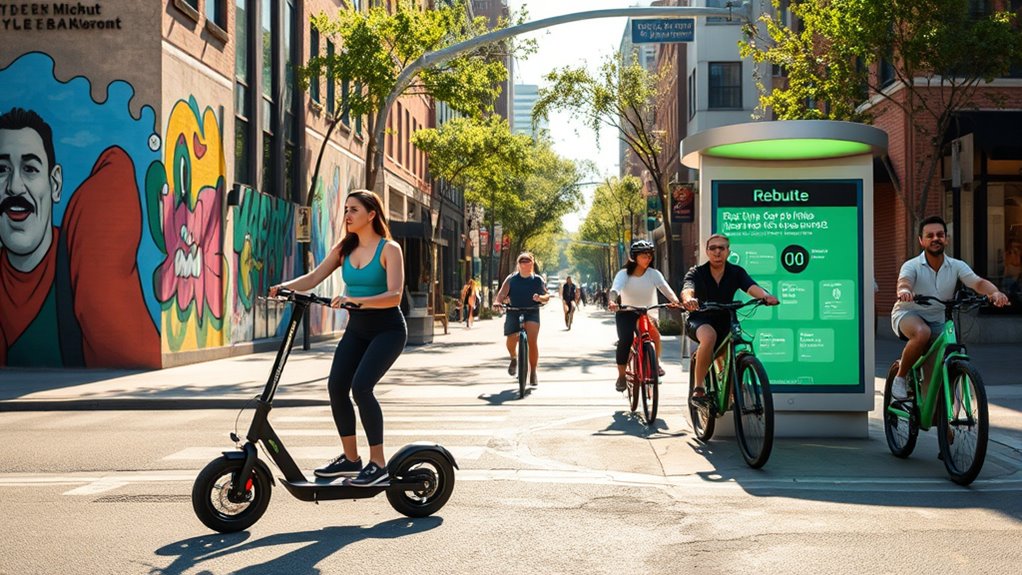
Regional and local incentive programs often complement state and federal efforts, offering extra savings and benefits for micro-mobility users. These programs aim to improve urban infrastructure by funding bike lanes, scooter parking, and safe routes, making micro-mobility safer and more accessible. They also target reducing environmental impact by encouraging eco-friendly transportation options. Cities may offer rebates for e-scooters, bike-sharing memberships, or discounts for using micro-mobility services during peak hours. Local governments often partner with transportation agencies or environmental groups to promote sustainable commuting. By taking advantage of these incentives, you can support urban development, lower your transportation costs, and contribute to cleaner air. Keep an eye on regional initiatives that align with your travel habits for maximum benefits.
Tips for Maximizing Savings and Making the Most of Benefits
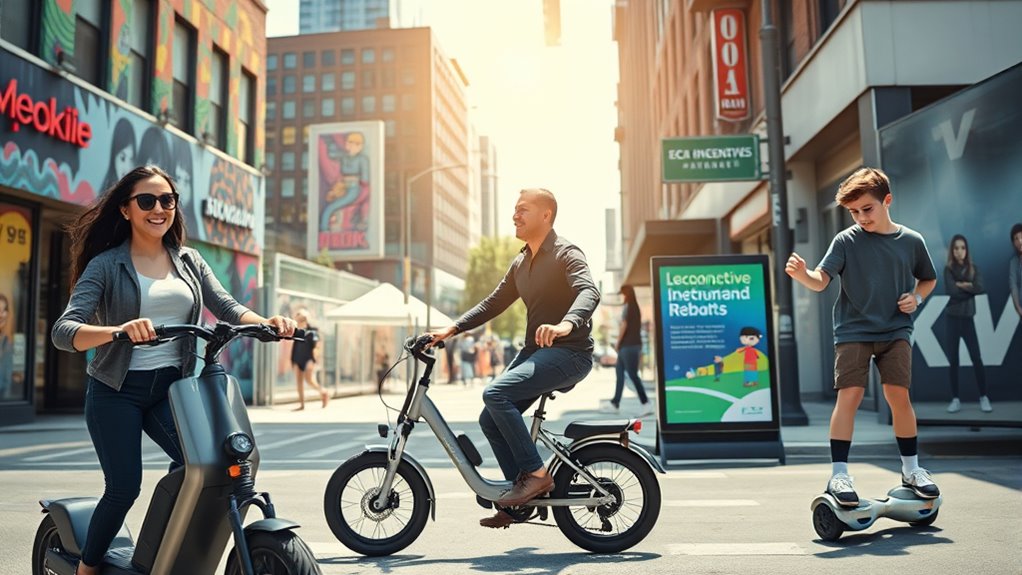
Maximizing your savings and benefits from micro-mobility incentives requires a proactive approach. Start by staying informed about current rebates and incentives, and always check for updates in your area. Proper e bike maintenance not only ensures safety but also helps avoid costly repairs, keeping your costs low and your rides smooth. Prioritize rider safety by wearing appropriate gear and following traffic laws, which can prevent accidents and potential penalties. Take advantage of all available benefits, such as referral programs or seasonal discounts, to stretch your budget further. Keep records of your expenses and incentives received, simplifying tax deductions and future claims. Staying knowledgeable about Mazda Tuning options can also inspire you to enhance your ride’s performance and appearance. By staying vigilant and responsible, you’ll maximize your savings while enjoying a safer, more efficient micro-mobility experience.
Frequently Asked Questions
Are There Age Restrictions for Micro-Mobility Incentives?
You might wonder about age restrictions for micro-mobility incentives. Typically, eligibility criteria include age requirements, and these can vary depending on your location and the specific program. Generally, you must be at least 16 or 18 years old to qualify, but some programs may have different age limits. Always check the specific eligibility criteria for each incentive to verify you meet the age requirements before applying.
Can I Combine Multiple Incentives for Greater Savings?
You can often use multi incentive stacking and rebate combination strategies to maximize your savings. Many programs allow you to combine different incentives, but it’s essential to check each program’s rules for restrictions or limits. By carefully coordinating these incentives, you can notably reduce your costs. Just make sure to read the fine print and verify eligibility to ensure you can successfully stack multiple incentives for greater savings.
Do Incentives Apply to Both New and Used Micro-Mobility Devices?
You’re curious if incentives cover both new and used devices. The answer isn’t straightforward—some programs do include used devices, but eligibility criteria vary widely. You’ll need to check each incentive’s specific rules, as not all apply to used micro-mobility devices. This means researching carefully to see if your used scooter or bike qualifies, and understanding the fine print to maximize your savings.
How Often Can I Claim Micro-Mobility Rebates?
You can typically claim micro-mobility rebates once per incentive renewal period, which varies by program. Rebate claim frequency depends on these renewal periods, so check the specific rules for your area or program. Some incentives might allow multiple claims annually, while others restrict you to one. Stay informed about the incentive renewal periods to maximize your rebate opportunities and guarantee you don’t miss out.
Are There Specific Brands or Models Eligible for Incentives?
Did you know that over 60% of rebate programs specify brand eligibility and model restrictions? When it comes to incentives, you should check if your preferred brand qualifies and whether specific models are eligible. Not all brands or models automatically qualify, so it’s important to confirm the details before purchasing. This way, you can maximize your savings and ensure your micro-mobility investment meets the rebate program’s requirements.
Conclusion
By taking advantage of micro-mobility incentives and rebates, you access savings and support sustainable transportation. Remember, these programs are your ticket to affordability—don’t leave money on the table. Act now, because opportunities like these won’t last forever. Embrace the chance to ride smarter, greener, and cheaper. After all, isn’t it time you make your commute work for you—rather than the other way around? Your smarter, more eco-friendly journey starts today.
